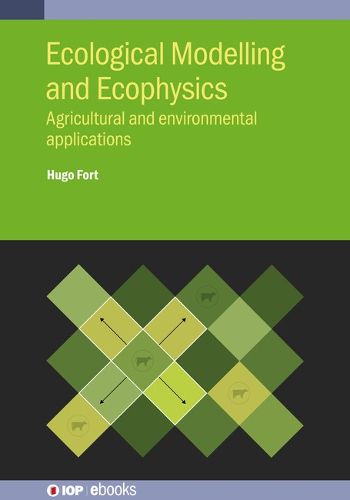Readings Newsletter
Become a Readings Member to make your shopping experience even easier.
Sign in or sign up for free!
You’re not far away from qualifying for FREE standard shipping within Australia
You’ve qualified for FREE standard shipping within Australia
The cart is loading…






This title is printed to order. This book may have been self-published. If so, we cannot guarantee the quality of the content. In the main most books will have gone through the editing process however some may not. We therefore suggest that you be aware of this before ordering this book. If in doubt check either the author or publisher’s details as we are unable to accept any returns unless they are faulty. Please contact us if you have any questions.
This book focuses on use-inspired basic science by connecting theoretical methods and mathematical developments in ecology with practical real-world problems, either in production or conservation. The text aims to increase the reader’s confidence to rely on partial aspects and relations of systems to which we only have an incomplete understanding. By abstracting and simplifying problems, Ecological Modelling and Ecophysics seeks to expand the reader’s understanding and ability to solve practical issues with rigorous quantitative methods.
The first part of this book is devoted to classical methods in population and community ecology. The second part aims to introduce the reader to certain tools and techniques from different branches of physics, such as thermodynamics, statistical mechanics and complex systems, and their applications in ecology and environmental sciences. Connecting ecological problems with well-studied phenomena in physics allows the exploiting of analogies to gain deeper insight into these problems, to identify novel questions and problems, and to get access to alternative quantitative methods and tools from physics. This is an essential text for quantitative ecologists and environmental scientists with an interest in novel mathematical approaches, and also applied physicists and mathematicians with an interest in ecological systems.
Key Features
Focuses on the practical applications of quantitative ecological models Practical challenges are drawn from agriculture and environmental science Applies methods and theories from physics to gain deeper insight into ecological challenges Covers key quantitative models in ecology including niche theory, mutualism, and game theory Will be of interest to environmental scientists and biophysicists as well as ecologists
$9.00 standard shipping within Australia
FREE standard shipping within Australia for orders over $100.00
Express & International shipping calculated at checkout
This title is printed to order. This book may have been self-published. If so, we cannot guarantee the quality of the content. In the main most books will have gone through the editing process however some may not. We therefore suggest that you be aware of this before ordering this book. If in doubt check either the author or publisher’s details as we are unable to accept any returns unless they are faulty. Please contact us if you have any questions.
This book focuses on use-inspired basic science by connecting theoretical methods and mathematical developments in ecology with practical real-world problems, either in production or conservation. The text aims to increase the reader’s confidence to rely on partial aspects and relations of systems to which we only have an incomplete understanding. By abstracting and simplifying problems, Ecological Modelling and Ecophysics seeks to expand the reader’s understanding and ability to solve practical issues with rigorous quantitative methods.
The first part of this book is devoted to classical methods in population and community ecology. The second part aims to introduce the reader to certain tools and techniques from different branches of physics, such as thermodynamics, statistical mechanics and complex systems, and their applications in ecology and environmental sciences. Connecting ecological problems with well-studied phenomena in physics allows the exploiting of analogies to gain deeper insight into these problems, to identify novel questions and problems, and to get access to alternative quantitative methods and tools from physics. This is an essential text for quantitative ecologists and environmental scientists with an interest in novel mathematical approaches, and also applied physicists and mathematicians with an interest in ecological systems.
Key Features
Focuses on the practical applications of quantitative ecological models Practical challenges are drawn from agriculture and environmental science Applies methods and theories from physics to gain deeper insight into ecological challenges Covers key quantitative models in ecology including niche theory, mutualism, and game theory Will be of interest to environmental scientists and biophysicists as well as ecologists